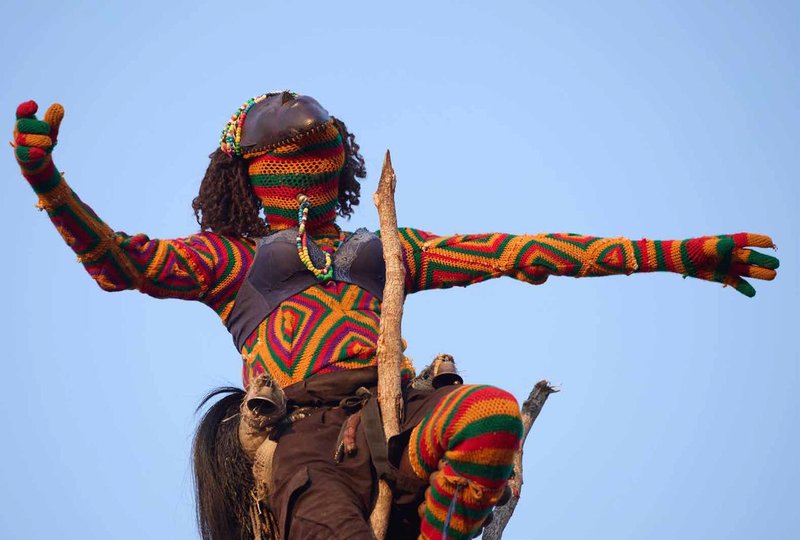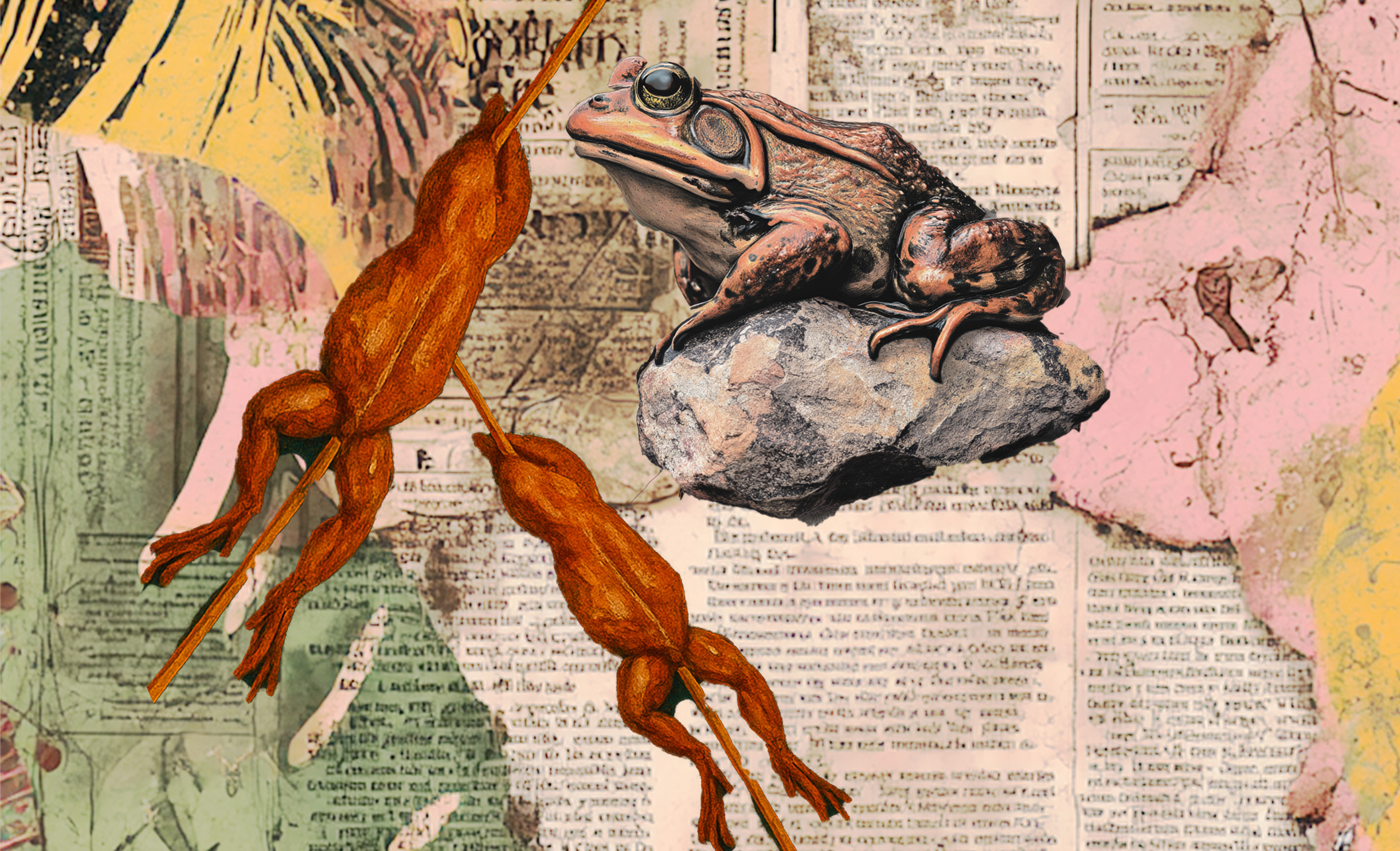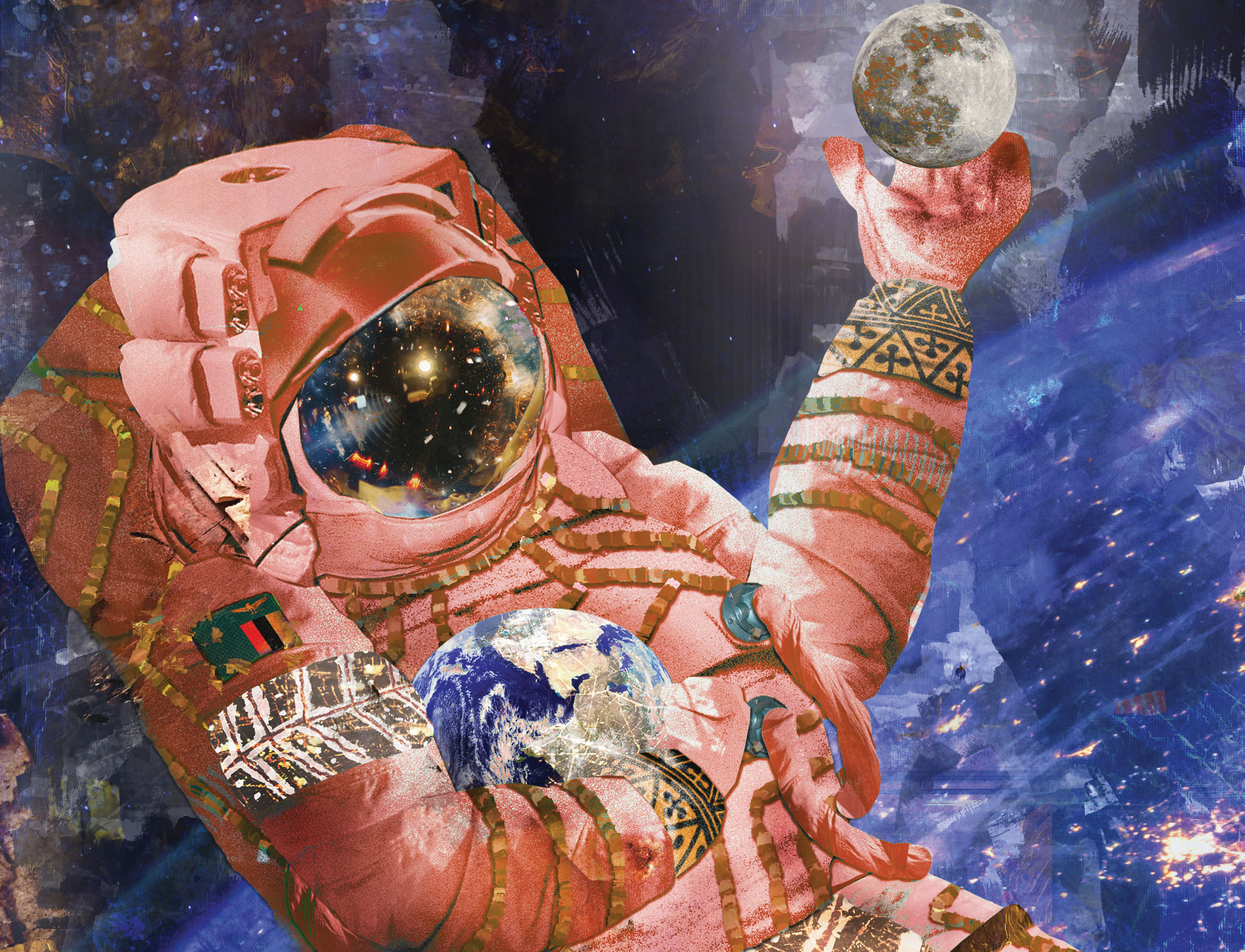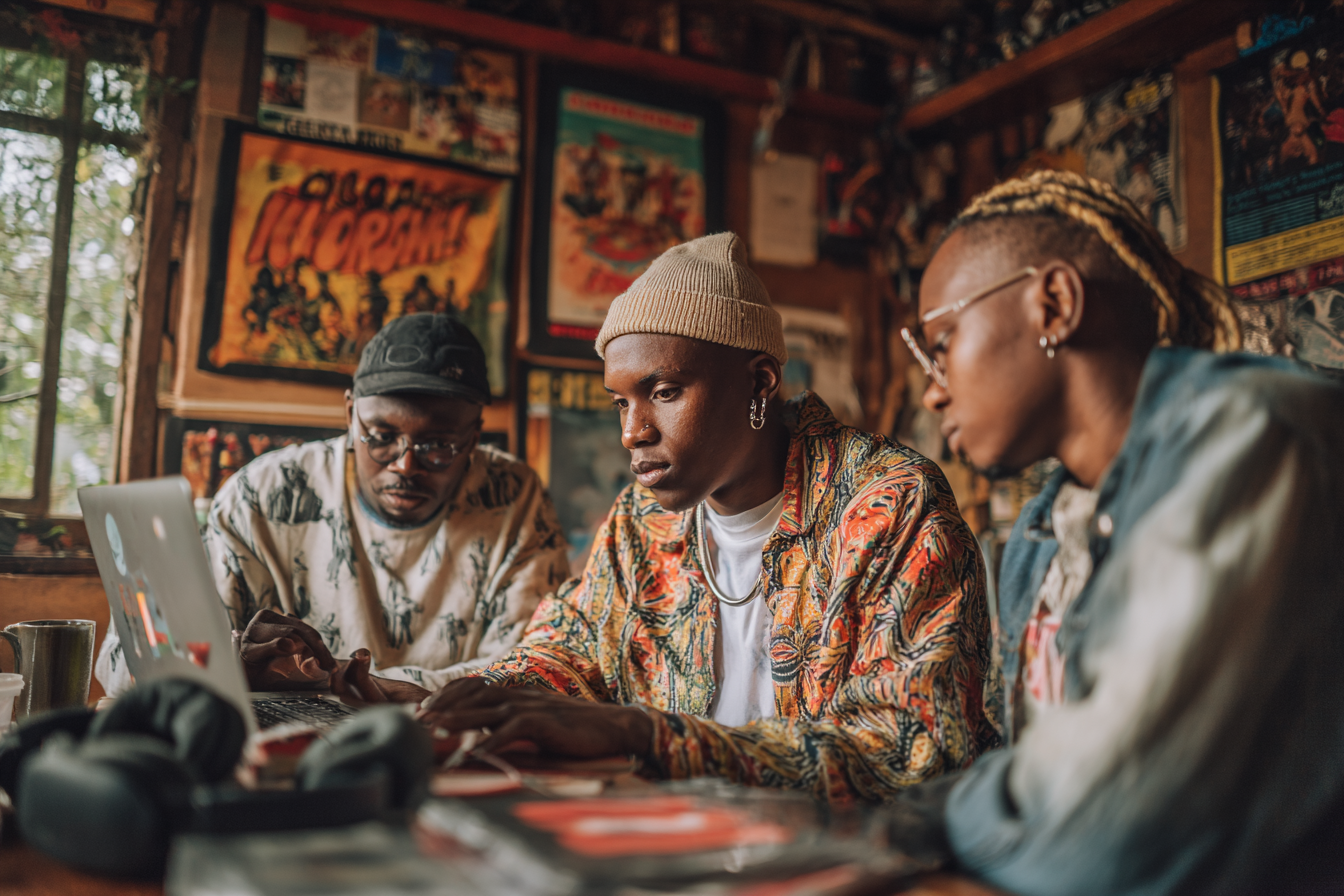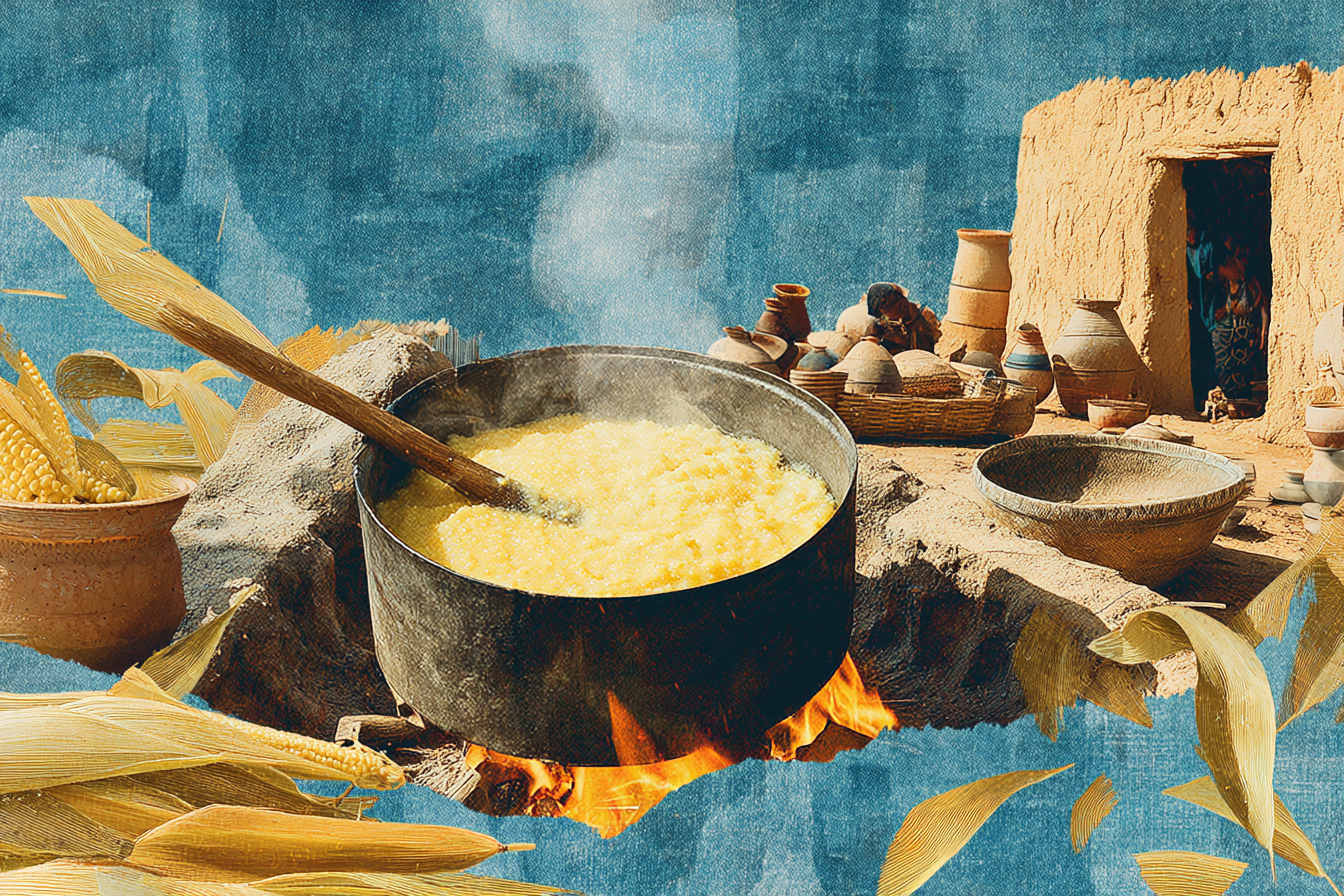With each passing year, Zambia continues to develop into a nation with no shortage of activities. Whether your interest lies in nightlife, nature, or the outdoors, you are guaranteed to find something worthy of your time. However, what we often overlook are the things that have been here for longer than Zambia itself—our traditional ceremonies.
Zambia’s cultural celebrations have survived for as long as we, as a people, have existed. They are a testament to the country’s rich diversity and resilience, enduring through every avenue of change, including colonialism, when they were banned and considered witchcraft, taking place in secrecy.
Now that they are openly celebrated once again, it is only right that they are embraced.
Kuomboka
The Kuomboka ceremony takes place in Western Province, on the Barotse floodplain of the Zambezi River, at the end of the rainy season, typically around March or April, when the area becomes flooded.
It involves the migration of the Lozi king (the Litunga) from his summer home to the higher grounds of Limulunga. But the Kuomboka ceremony is no ordinary move—it is a spectacle of procession that must be seen to be believed.
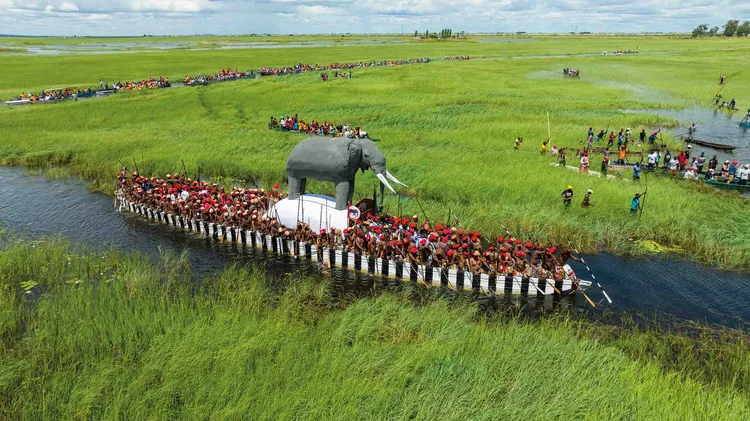
The ceremony begins with two white scout canoes that set off first into the water. Their goal is to assess the water levels and scan the area for anything that might jeopardise the monarch’s safety. Once they give the signal, the show begins. A large barge, striped in black and white and traditionally named the Nalikwanda, carries the king, his chiefs, and a group of paddlers dressed in leopard skin—a position considered the highest honour for those chosen to steer the chief. The king’s possessions, attendants, and musicians all sit atop the Nalikwanda, which is crowned with a statue of an elephant, a revered symbol among the Lozi people.
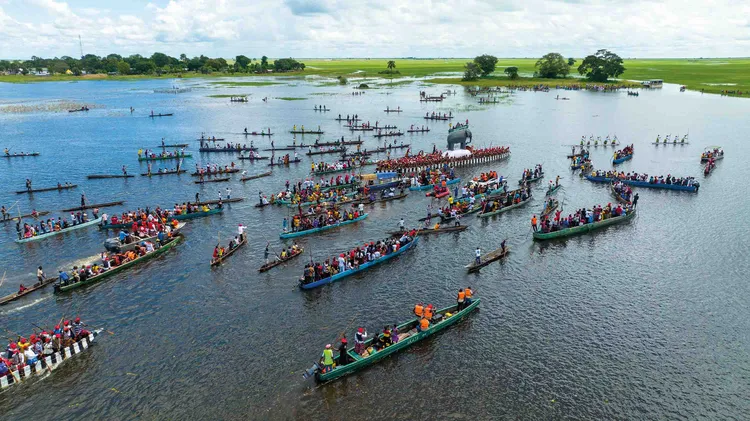
Two more boats follow—one carrying the queen and the other, the prime minister. The procession takes the better part of the day, accompanied by the hypnotic rhythm of drums and a chorus of chants that create an energy impossible to replicate anywhere else. The paddlers’ oars splash in uniform synchrony, adding to the mesmerising atmosphere.
As the sun sets, the king finally arrives at his destination, the splendour of the barge framed against the pink hues of the Zambian sunset. He disembarks wearing a British admiral’s uniform—a nod to a treaty signed between a past Litunga and Queen Victoria.
N'cwala
On the last Saturday of February, the Ngoni people gather at Mtenguleni Village in Chipata to honour their gods, ancestral spirits, and chief and to thank them for the bounty of the season’s harvest. The ceremony is also an opportunity to commemorate the Ngoni tribe’s victories in various tribal wars fought during their migration from modern-day South Africa. The Ncwala ceremony draws thousands of spectators and is filled with electrifying traditions.
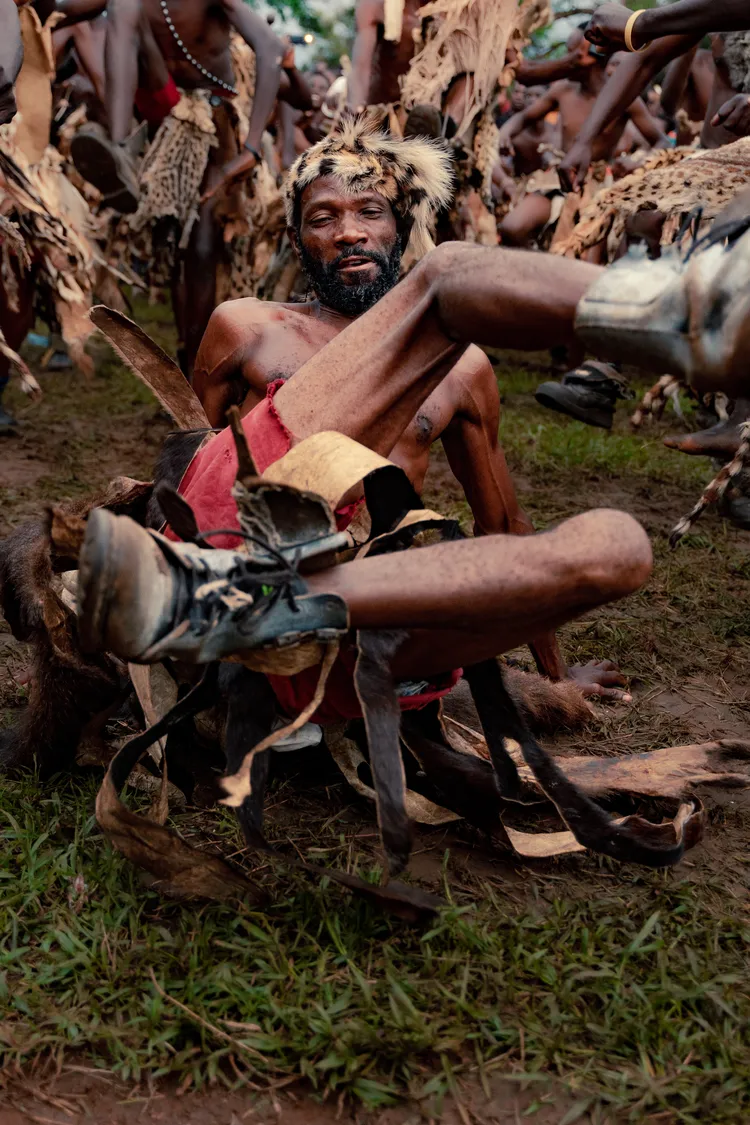
The event begins with the season’s first yield of crops being taken to the Paramount Chief (Inkhosi Yama Khosi) to receive his blessings. The food is then tasted in a revered process known as Mulumo. It is believed that, during this ritual, the chief becomes a conduit for communication between the tribespeople and their royal ancestors.
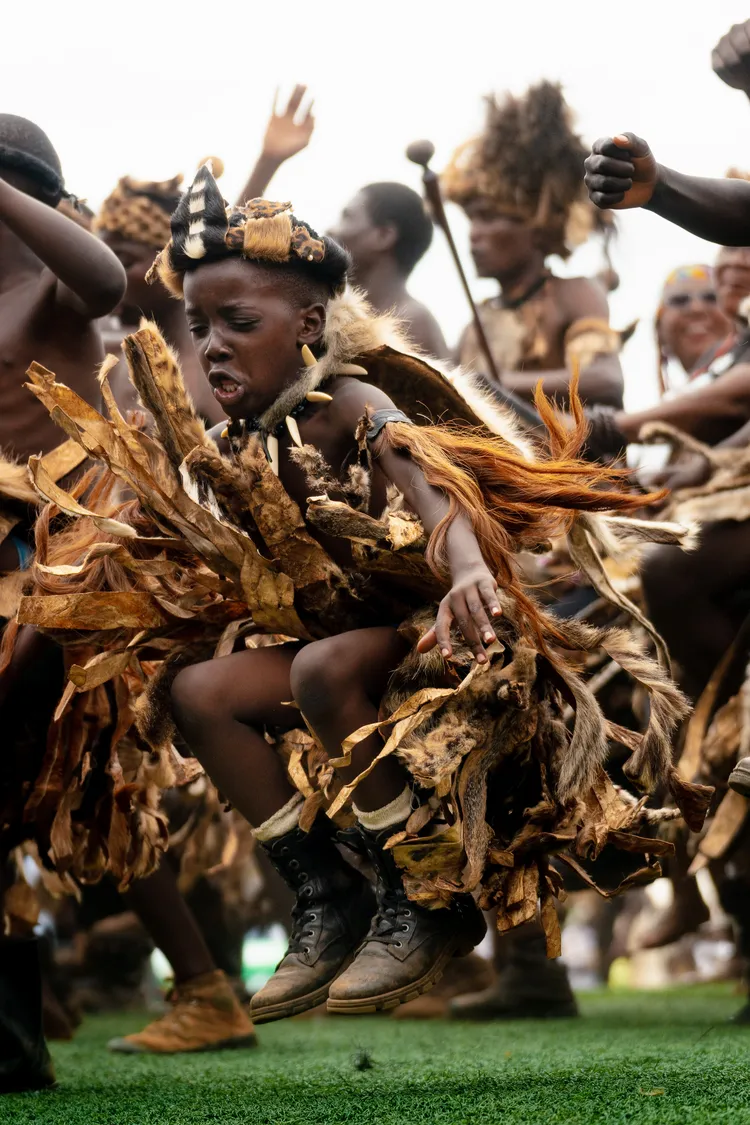
On the final day of the ceremony, the atmosphere erupts with energy as spectators are treated to the clang of drums and the powerful, rhythmic dances of Ngoni warriors. This portion of the ceremony lies at the fascinating intersection of military and musical tradition. The sound of ululating, clapping, and chanting builds as the warriors’ dust-lifting kicks intensify, climaxing with the ritual slaughter of a black bull—referred to as the Mnikelo. The Paramount Chief then partakes in its blood, a powerful symbolic act rooted in Ngoni tradition.
Ukusefya Pa Ngwena
Ukusefya Pa Ngwena is an annual ceremony held by the Bemba people in Mungwi Village, Kasama. It is a celebration of the tribe’s formation, their arrival in Zambia, and their achievements since settling at that very spot.
The Bemba’s journey to Zambia was long, taking them from modern-day Angola to Luba (in present-day DRC) and through places such as Luapula and Chambeshi. Upon reaching their final destination, they discovered a dead crocodile—a totem of the Bemba people. It was seen as a symbol of good fortune and a sign that they had found their home. The rest is history, and each year, the Ukusefya Pa Ngwena ceremony brings that history to life.
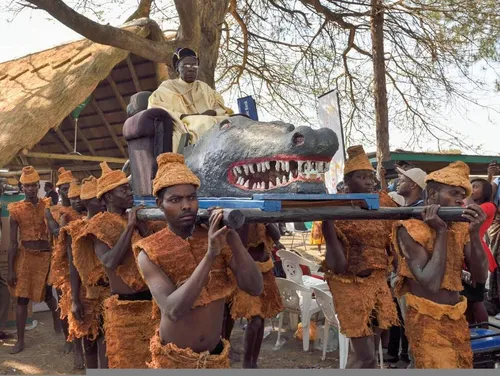
In Kasama, August and September usher in a colourful array of chitenges, singing, dancing, and the vibrant beat of drums. At the centre of the festivities is a theatrical re-enactment of the tribe’s arrival, culminating in the appearance of the Paramount Chief, Chitimukulu, who is escorted from his palace in a giant papier-mâché crocodile.
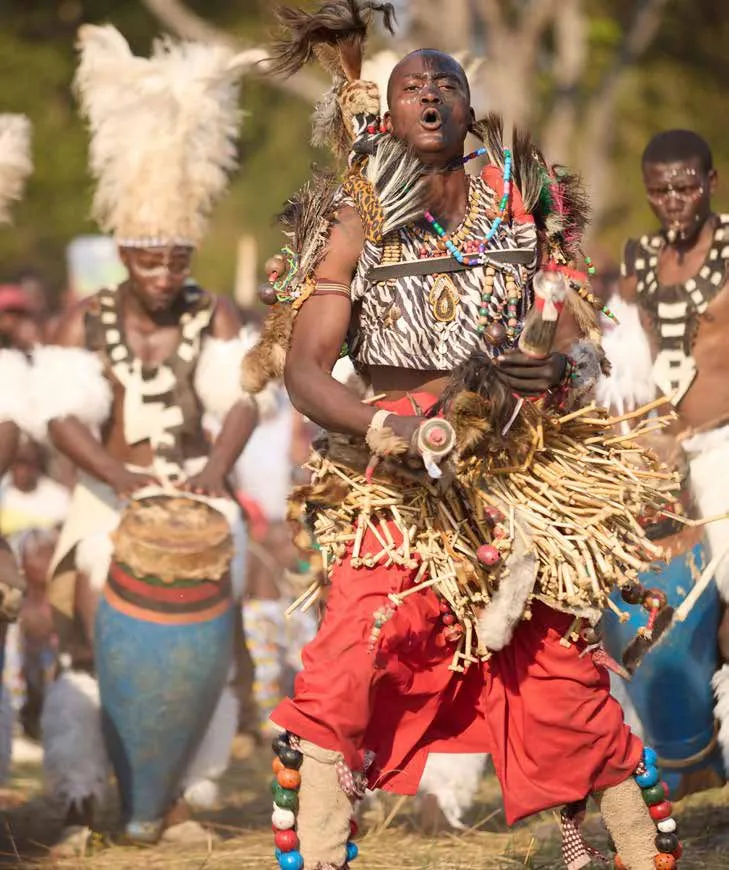
In a world that often changes faster than we can keep up with, our traditional ceremonies serve as a vital anchor to the past, reminding us of the strength we find in community. Whether one chooses to attend the Kuomboka, the Nc’wala, the Ukusefya Pa Ngwena, or all three, each time we hear the same drumbeats that echoed for those who came before us, we honour their legacy and ensure its resonance for generations to come.
